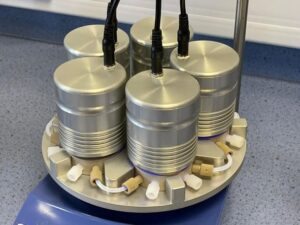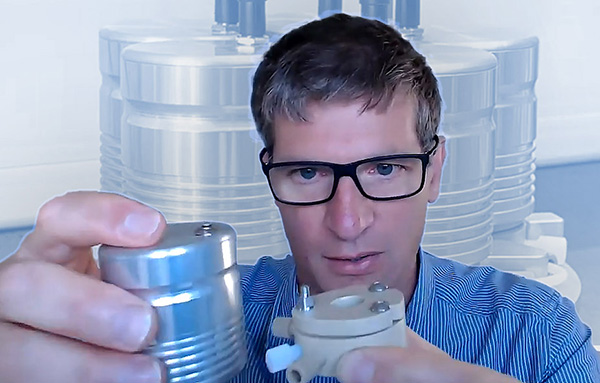Developed by Asynt, in conjunction with the University of Leeds (UK), the fReactor Photo Flow is unlocking Photochemistry in Flow and provides an easy-to-use, yet powerful platform for scientists looking to explore this field of applications.
It is widely acknowledged that photocatalysis is a valuable synthetic tool for providing access to reaction pathways which would normally prove problematic or require multi-step synthetic routes using classical thermal or chemical activation methods. However, until now, synthetic organic chemists have shied away from photochemistry because of safety concerns around ionizing UV light, and overly complex equipment.
Quite literally unlocking Photochemistry in Flow Chemistry
Specifically designed for ease of use and high operational safety, the fReactor Photo Flow delivers all the key advantages of flow photochemical reactors, over conventional batch systems, including consistent light flux, controlled exposure times and precise temperature control.

This new addition to the Asynt fReactor Flow Chemistry platform has been launched with two high power LED wavelengths options (450nm / Blue and 365nm / UV) to suit most photochemical activation requirements. Alternative excitation wavelength options are available upon request.
Asynt’s popular fReactor platform offers chemists an affordable entry point into the world of Flow Chemistry. Integrating the efficiency of pipe-flow processing with the advanced mixing of 5 Continuous Stirred Tank Reactors (CSTR), fReactor delivers a versatile “plug-and-flow” setup which is well-suited to multiphasic reactions allowing chemists to explore continuous-flow processing with ease.
Installation of each fReactor Photo Flow module is exceptionally straight forward. By placing the module over the required fReactor cell, the Photo Flow simply clips quickly into position ready for you to start your experiment. Designed for flexibility, you can choose how many Photo Flow modules to use on a fReactor base platform, from one to five. All five fReactor Photo Flow modules can be powered from a single power supply using an optional splitter lead.

Prof. Nikil Kapur, University of Leeds, with fReactor Photo Flow module
To view PowerPoint slides from our recent “Unlocking Photochemistry in Flow” on-demand webinar please visit https://www.asynt.com/wp-content/uploads/2021/07/Asynt-fReactor-PhotoChem-Presentation-July-2021.pdf.
For further information on the fReactor Photo Flow please visit https://www.asynt.com/product/freactor-photo-flow/ or contact Asynt on +44-1638-781709 / [email protected].
You can also visit the dedicated info-site www.fReactor.com where you’ll find a wealth of information from published research papers, applications, Flow Chemistry guidance and much more.
Download this press release in full in PDF format here: Unlocking Photochemistry in Flow
Un nouvel outil pour vos expériences de photochimie en flux continu
Die Photochemie in Flow-Anwendungen
Abriendo las puertas de la fotoquímica en flujo




